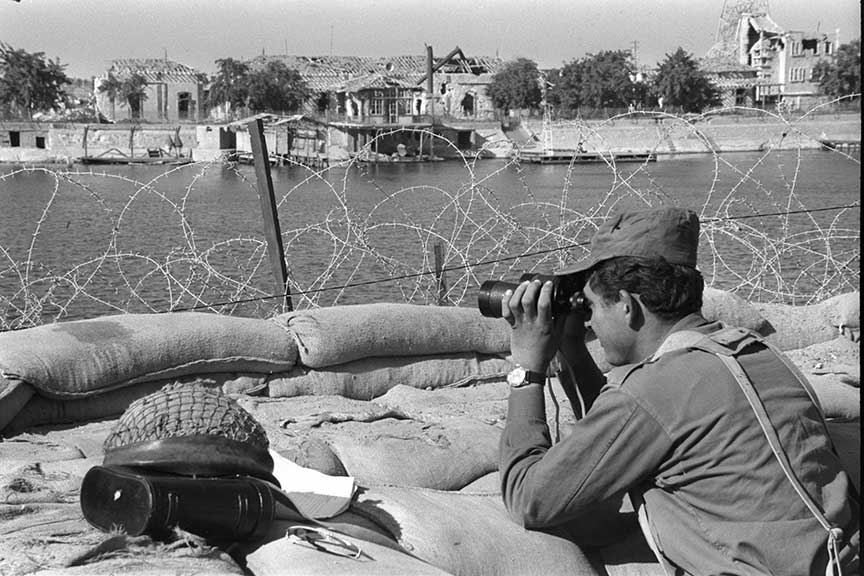War of Attrition

Israeli Soldiers Along the Suez Canal
During a three-year period, Israel and Egypt fought a "War of Attrition" along the Suez Canal. In the course of the war over 500 Israelis were killed.
The sinking of the Israeli destroyer Eilat on October 27, 1967, was the first act in the War of Attrition. Israel responded to the sinking by shelling the Egyptian oil refineries in Suez. Events quieted down for a period until September 8, 1968, when the Egyptians opened a massive artillery bombardment on Israeli positions. The Egyptian bombardment killed ten Israelis and wounded eighteen. The Egyptians repeated this attack again on October 26, 1968, killing thirteen Israelis. On the same day, two Israelis were killed in an ambush. Israel responded by shelling the refineries again, as well as the cities of Suez and Ismailia.
Israel faced a dilemma—the Egyptians had amassed a large number of troops and hundreds of artillery pieces along the canal. Israel did not have as many artillery pieces and did not have the manpower to populate the whole line. There was some thought of abandoning the area along the canal and just keeping a mobile force to respond, but in the end, it was decided to build a series of small forts along the canal and maintain a mobile force in the rear to respond.
On October 31, 1968, Israel responded to the shelling by dispatching an elite unit deep into Egypt to blow up two bridges over the Nile and a new power station at Nag Hammadi. This resulted in four months of quiet.
In March 1969, Egyptian President Gamal Abdel Nasser formally declared the start of the War of Attrition. On March 8, a massive artillery bombardment resulted in the death of only one Israeli soldier, thanks to the fortifications that were built.
On July 28, Israel responded to near-constant artillery bombardment by sending commandos to Green Island south of the Suez Canal and capturing a major radar installation. Israel was then free to attack Egyptian positions along the canal and further inland at will.
On the night of September 9, Israel destroyed the two Egyptian patrol boats responsible for the northern part of the canal. The next day, a small force of Israeli troops crossed the canal and traveled thirty miles down the coastal road, attacking Egyptian troops wherever they were. They were unopposed. The embarrassed Egyptians tried to respond with a major air raid on September 11, 1969. Seven MiG-21s, one MiG-17, and three SU-7s were downed by Israeli aircraft, which suffered no losses.
The Russians supplied the Egyptians with a new P-12 radar, a system that was unknown in the West. On the night of December 26, 1969, Israel sent a force to a P-12 station near Ras Gharib. There they captured the station, dismantled the radar, and took it back to Israel to study.
 >
>